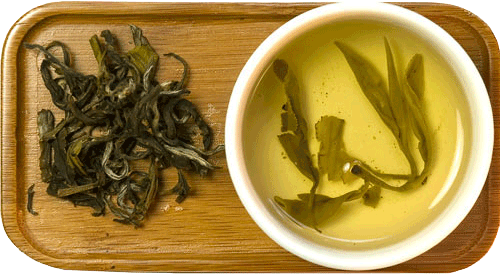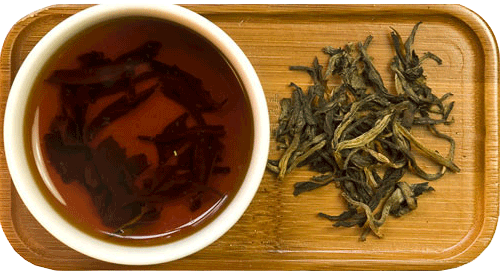
From The Garden To Your Cup!
All about tea fermentation
Many types of tea come from the same plant, Camellia Sinensis. The different types of tea are the result of differences in the tea manufacturing process. Commonly referred to throughout the industry, the process referred to as fermentation in tea production is actually a different chemical process, known as oxidation.
One of the key steps in the tea manufacturing process is the degree of fermentation the tea leaves. It means how much a tea is allowed to undergo enzymatic oxidation before drying. This oxidation process may be stopped by either roasting or steaming the leaves before they are completely dried out. Through fermentation, the originally deep green leaves become reddish-brown color. The longer is the fermentation, the darker is the color. Depending on the length of roasting and degree of fermentation, the fragrance can range from floral to fruity and malty.
One method of classifying teas are is based on the degree of fermentation:
- Non and light-fermented
- Semi-fermented
- Fully-fermented
- Post-fermented
For fermentation, tea leaves are placed in large, cool, moist and darkened rooms, where they are laid out on flat surfaces with an even layer of about 10 cm. Most often, aluminum or wood is used to avoid the chemical reaction of tea leaf juice and the surface. An ideal combination of a low temperature of about 15’s and high humidity – about 90%. Fermentation can last from 45 minutes to several hours.
 Fermentation
Fermentation  GREEN TEA BLACK TEA
GREEN TEA BLACK TEA
Non and light-fermented teas
Non-fermented include white and some green teas with an oxidation state of up to 10%, which have not gone through the fermentation process or have passed to a weak degree. Ancient masters of tea art noticed that a preheated leaf is not subject to fermentation or oxidation. That is why tea leaves of these varieties retain their natural color and properties. Unfermented tea has long been considered a healing drink surrounded by its own kind. Its healing properties were discovered back in the 19th century, when a huge number of useful components were allocated in it, which are almost completely preserved due to the lack of fermentation.
After leaf collection, which usually occurs before 9am, the raw materials are dried and sorted. Then the tea leaves undergo a heat treatment to remove bitterness and stop fermentation Most green teas stop the fermentation process through roasting while a few will stop the fermentation process through steaming. Further, as a rule, the leaves are given some form; finally dried, sorted – and, the tea is ready to drink.
These teas retain quite a bit of their original flavor. Green teas fall in this category, they are practically not fermented teas. White teas undergo very light fermentation during the withering process. Sometimes these non-fermented and very light fermented teas will be scented with Jasmine petals to give the tea an aroma of Jasmine.
Examples of Non-fermented and very light fermented teas: Green Tea, Jasmine scented Green tea, Yellow Tea .These teas are yellow-green in color and have fresh natural aroma.
Semi-fermented teas
Tea which are allowed to undergo 10% to 80% fermentation are semi-fermented (or moderately) teas. Tea brewed from semi-fermented tea leaves have a slight yellow to brown color and possess a subtle fragrant aroma. These teas can be further classified into three categories based on their levels of fermentation:
Light (10% – 20%): Jasmine Te, Pouchong Tea, Mei Shan Full Aroma Oolong. These teas are full aroma, clarity, and have light golden color.
Medium (20% – 50%): Most of oolongs, Dong-Ding (Tung-Ting) Oolong, Tieguanyin. These teas have light green-brown color, a full flavor and sweet taste and aftertaste.
Heavy (50% – 80%): Oriental Beauty Oolong Tea (Dongfang Meiren), Red Oolong Tea (Hong wu long) from Hsinchu. These teas have red-orange color and fruity aroma and taste.
Fully-fermented teas
As a result of fermentation, part of the insoluble substances of the plant tissue of the tea leaf turns into soluble and easily soluble. These substances give tea taste, odour and color. And the longer the fermentation process takes place, the stronger they are.
Fermentation time is temperature dependent. The higher it is, the faster the fermentation. But as dangerous are too high temperatures, and too low, at which the fermentation takes much longer than usual. Optimum temperature – plus 22 – 26 degrees. At below plus 15, the process stops, at above plus 30 degrees, part of the soluble products that give strength to the infusion passes into an insoluble state, thereby deteriorating the quality of tea.
Black teas are fully fermented. Tea from Black tea leaves have a dark red color and a sweet aroma of malt sugar.
Examples of that teas are Black Teas.
Post-fermented teas
Teas which are allowed to ferment and then have the processed stopped and later fermented again are known as post-fermented tea.
Example: Pu-Erh Tea. Has very specific aroma, color and taste depends on degree of processing.
The degree of fermentation of the tea leaf .
| TEA TYPE | FERMENTATION | % OF FERM. | |
|---|---|---|---|
| Green tea | Non-fermented | 1-5 |
Uncontrolled fermentation |
| Yellow tea | Light-fermented | 9 |
Uncontrolled fermentation |
| White tea | Light-fermented | 11-15 |
Uncontrolled fermentation |
| Red (Black) tea | Fully-fermented | 90-100 |
Controlled fermentation |
| Shu pu’er | Postfermented | 100 |
Controlled fermentation |
How does it affect brewing? The higher the degree of fermentation, the higher is the temperature of brewing. With oxidation over 10%, the temperature of water should be 75°C -80°C , if over 80% may be easily brewed in 95°C water
.
